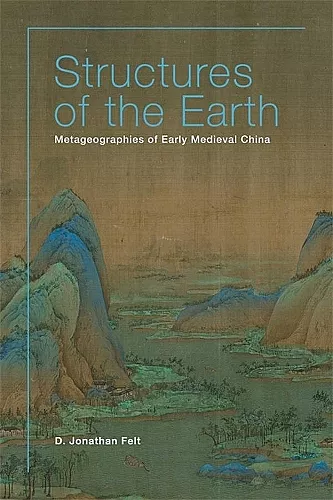Structures of the Earth
Metageographies of Early Medieval China
Format:Hardback
Publisher:Harvard University Press
Published:26th Mar '21
Should be back in stock very soon

The traditional Chinese notion of itself as the “middle kingdom”—literally the cultural and political center of the world—remains vital to its own self-perceptions and became foundational to Western understandings of China. This worldview was primarily constructed during the earliest imperial unification of China during the Qin and Han dynasties (221 BCE–220 CE). But the fragmentation of empire and subsequent “Age of Disunion” (220–589 CE) that followed undermined imperial orthodoxies of unity, centrality, and universality. In response, geographical writing proliferated, exploring greater spatial complexities and alternative worldviews.
This book is the first study of the emergent genre of geographical writing and the metageographies that structured its spatial thought during that period. Early medieval geographies highlighted spatial units and structures that the Qin–Han empire had intentionally sought to obscure—including those of regional, natural, and foreign spaces. Instead, these postimperial metageographies reveal a polycentric China in a polycentric world. Sui–Tang (581–906 CE) officials reasserted the imperial model as spatial orthodoxy. But since that time these alternative frameworks have persisted in geographical thought, continuing to illuminate spatial complexities that have been incompatible with the imperial and nationalist ideal of a monolithic China at the center of the world.
Fascinating…A pleasure to read. It is meticulously researched, consistently engaging, and always thought-provoking without being stridently iconoclastic or tendentious. I highly recommend it. -- Charles Holcombe * Journal of Chinese Studies *
This is a brilliant study of fundamental geographic ideas in China’s history. It is extensive and intensive in its research, generous in its acknowledgment of others, compelling in its arguments, and illuminating in its conceptualizations. Bibliographies in the dynastic histories indicate that this period (after Han before Tang) had seen the first blossoming of local historical writing and a surge in geographic writing, but the surviving material seemed unlikely to support significant research on the topic. Felt understood the centrality of Li Daoyuan’s massive commentary on the Classic of Rivers (Shuijing zhu), and his in-depth analysis of the text has established its importance. A mark of great work may be that it all seems obvious after one has read it, until one recalls that prior to that it was not obvious at all. This study should be the point of reference for future writing on the intellectual history of historical geography. -- Peter Bol, Harvard University
Structures of the Earth succeeds in its examination of a massive range of discrete evidence. Felt has conducted this research against the enormous burden of the teleological paradigm about Chinese imperial unification in the field of world history. …Required reading for early Chinese medievalists. -- Hieu Phung * Historical Geography *
ISBN: 9780674251168
Dimensions: 229mm x 152mm x 29mm
Weight: 680g
408 pages